Design Engineer
1500+ Design Engineer Interview Questions and Answers

Asked in Tata Technologies

Q. Stress Strain curve, What will happen if you use petrol in diesel engine and Diesel in petrol engone.
Using petrol in diesel engine and diesel in petrol engine can cause serious damage to the engine.
Petrol in diesel engine can cause knocking, damage to fuel pump and injectors, and clog the fuel filter.
Diesel in petrol engine can cause incomplete combustion, damage to spark plugs and catalytic converter, and clog the fuel system.
It is important to always use the correct fuel for the engine to avoid costly repairs and potential safety hazards.

Asked in Tech Mahindra

Q. What sheet metal operations can increase its strength without changing its thickness?
Operations like bending, folding, and crimping can increase the strength of sheet metal without changing its thickness.
Bending: This process involves bending the sheet metal along a straight line to increase its strength.
Folding: Folding the sheet metal creates multiple layers, increasing its strength.
Crimping: Crimping involves creating small indentations or folds in the sheet metal to increase its rigidity.
Rolling: Rolling the sheet metal can also increase its strength by c...read more
Design Engineer Interview Questions and Answers for Freshers

Asked in Hindustan Aeronautics

Q. What is the difference between a lathe and a milling machine?
Lathe is used for cylindrical workpieces while milling machine is used for flat or irregularly shaped workpieces.
Lathe rotates the workpiece while the cutting tool remains stationary, while milling machine rotates the cutting tool while the workpiece remains stationary.
Lathe is used for turning, drilling, and boring operations, while milling machine is used for cutting, drilling, and shaping operations.
Lathe is ideal for creating cylindrical shapes such as shafts, while milli...read more

Asked in Tata Technologies

Q. What design considerations should be made while designing a part?
Design considerations for a part
Functionality and purpose of the part
Material selection based on properties and manufacturing process
Cost-effectiveness and feasibility of production
Ease of assembly and maintenance
Environmental impact and sustainability
Compliance with regulations and standards
Aesthetics and user experience
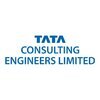
Asked in TCE

Q. How would you lift a 10kg box to a height of 1 meter?
To lift a 10kg box to 1m, consider mechanical methods or manual techniques for safety and efficiency.
Use a mechanical lift or hoist for ease and safety, especially in industrial settings.
Employ a pulley system to reduce the effort needed to lift the box.
If lifting manually, bend your knees and keep your back straight to avoid injury.
Consider using a hand truck or dolly for transporting the box to the desired height.

Asked in HCLTech

Q. 1. what are the considerations while selecting engineering materials for specific applications? 2. How would you calculate sheer strength of a round cross section metal bar? 3. Explain your project work.
Considerations for selecting engineering materials, calculating sheer strength of a metal bar, and explaining project work.
Consider factors like strength, durability, cost, and availability when selecting materials for specific applications.
Calculate sheer strength of a round cross section metal bar using the formula: Sheer Strength = (0.5 * Ultimate Tensile Strength)
In project work, explain the objectives, methodology, results, and any challenges faced.
Design Engineer Jobs
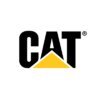


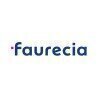
Asked in Faurecia

Q. What are the different types of snap fits used in plastics?
Snap fits are used in plastics to join two parts together without the need for additional fasteners.
Cantilever snap fit
Annular snap fit
Torsion snap fit
Snap hinge
Snap bead
Snap tab
Snap lock
Snap latch
Snap hook

Asked in Neometrix Engineering

Q. When is negative slip possible in a reciprocating pump?
Negative slip in reciprocating pump occurs when the pump runs faster than the synchronous speed of the motor.
Negative slip occurs when the pump runs faster than the synchronous speed of the motor.
This can happen if the pump is not properly matched to the motor or if there is a mechanical issue causing the pump to run faster.
Negative slip can lead to decreased efficiency and potential damage to the pump.
Share interview questions and help millions of jobseekers 🌟


Asked in Tech Mahindra

Q. What is GD&T in mechanical engineering? Describe it in detail.
GD&T stands for Geometric Dimensioning and Tolerancing, a system used in mechanical engineering to define and communicate engineering tolerances.
GD&T is a symbolic language used on engineering drawings to specify the allowable variation in form, size, and orientation of features.
It helps ensure that parts and assemblies will fit together and function properly.
GD&T uses symbols such as squares, circles, and triangles to define tolerances for features like flatness, straightnes...read more

Asked in Ilensys Technologies

Q. How can plastic defects be prevented, and which design consideration methods are used?
To prevent plastic defects, design engineers use methods such as mold flow analysis, material selection, gate design optimization, and part geometry considerations.
Perform mold flow analysis to identify potential issues before production.
Select the appropriate plastic material based on the requirements of the part.
Optimize gate design to ensure proper filling and packing of the mold.
Consider part geometry to minimize stress concentrations and improve overall quality.
Use desig...read more

Asked in Schneider Electric

Q. what is fuse and what is it's maximum rating
A fuse is an electrical safety device that protects electrical circuits from overloading and short circuits. Its maximum rating depends on the application.
A fuse contains a metal wire or filament that melts when the current exceeds a certain level, breaking the circuit and preventing damage to the equipment or wiring.
Fuses are rated based on their current-carrying capacity and voltage rating.
Examples of fuse ratings include 1A, 5A, 10A, 20A, etc.
Fuses are commonly used in hou...read more


Q. What are warpage and sink marks in plastic, and how can they be prevented?
Warpage and sink marks are common defects in plastic parts caused by uneven cooling. Prevention methods include proper gate design, cooling system optimization, and material selection.
Warpage is the deformation of a plastic part due to uneven cooling, leading to dimensional inaccuracies.
Sink marks are depressions on the surface of a plastic part caused by uneven cooling and shrinkage.
Prevention methods include proper gate design to ensure uniform filling, optimization of cool...read more

Asked in Isgec Heavy Engineering

Q. 1 what is Design. 2 Tell me about GD&T 3 what is joints and its type. 4 tell me about all standards use in design. 5 What is failure. 6 Tell me about properties of material . 7 What is vernier caliper and least...
read moreDesign Engineer interview questions covering topics like design, GD&T, joints, standards, failure, material properties, vernier caliper, boiler, Bernoulli theorem, Pascal law, welding.
Design is the process of creating a solution to a problem or need.
GD&T (Geometric Dimensioning and Tolerancing) is a system for defining and communicating engineering tolerances.
Joints are connections between two or more parts, types include welded, bolted, and riveted joints.
Standards commonly ...read more

Asked in Tata Technologies

Q. What is tolerance and why is it required?
Tolerance is the allowable variation in a dimension or property of a product or component.
Tolerance ensures that a product or component will function properly and fit with other parts
It helps to control the manufacturing process and reduce costs
Tolerance can be specified for dimensions, materials, and other properties
Examples include the tolerance for the diameter of a shaft or the hardness of a metal
Tolerance can be expressed as a range or a specific value

Asked in Vrv Asia Pacific

Q. What piping codes are used in designing a chemical plant?
ASME B31.3, ASME B31.1, API 650, API 620 are some of the piping codes used in designing a chemical plant.
ASME B31.3 is used for process piping
ASME B31.1 is used for power piping
API 650 is used for storage tanks
API 620 is used for low-pressure storage tanks
Other codes like ASTM, ANSI, and ISO may also be used depending on the specific requirements of the project

Asked in Marine Electricals

Q. If hired, how would you contribute to increasing company revenue?
Yes, my skills and experience can contribute to increasing company revenue.
I have a proven track record of improving revenue in my previous roles.
I can bring innovative ideas and solutions to the table.
I am a team player and can collaborate with others to achieve revenue goals.
I am constantly learning and adapting to new technologies and market trends.
For example, in my previous job, I implemented a new marketing strategy that increased revenue by 20% in the first quarter.
Asked in Dongwoo Surfacetech

Q. Do you have design knowledge in Solidworks and AutoCAD software?
Yes, I have design knowledge in both Solidworks and Autocad software.
I have extensive experience using Solidworks and Autocad for designing various mechanical components and systems.
I am proficient in creating 3D models, assemblies, and detailed drawings using both software.
I have successfully completed multiple design projects using Solidworks and Autocad, meeting all the required specifications and standards.
I am familiar with the advanced features and tools in both softwar...read more

Asked in Tata Technologies

Q. What types of modules are present in the Creo environment?
Creo environment has various modules for different design tasks.
Creo Parametric for 3D modeling
Creo Simulate for simulation and analysis
Creo Illustrate for technical illustrations
Creo Schematics for creating electrical schematics
Creo View for viewing and sharing CAD files
Creo Direct for direct modeling
Creo Layout for 2D layout design
Creo Options Modeler for managing design configurations

Asked in Talbros

Q. How to solve manufacturing problems & how to co-relate the design?
To solve manufacturing problems and correlate design, it is important to analyze root causes, communicate effectively with cross-functional teams, and iterate on design improvements.
Identify the root cause of the manufacturing problem by analyzing data and conducting tests.
Communicate effectively with cross-functional teams including manufacturing, quality, and design engineers to understand the impact of the problem on the design.
Iterate on design improvements based on feedb...read more

Asked in Tech Mahindra

Q. From your experience, what factors need to be considered while designing a component for sheet metal and plastic?
Factors to consider when designing components for sheet metal and plastic
Material selection based on properties and application requirements
Design for manufacturability to ensure ease of production and cost-effectiveness
Consideration of material thickness and bending radius for sheet metal components
Wall thickness, draft angles, and rib design for plastic components
Integration of features like fastening methods, mounting points, and assembly considerations
Evaluation of enviro...read more
Asked in KK LIGHTING INDIA

Q. How do you solve plastic defects like short mold in injection molding?
To solve short mold defects in injection molding, adjust injection speed, pressure, temperature, and cooling time.
Adjust injection speed to ensure proper filling of the mold cavity.
Increase injection pressure to prevent short shots.
Optimize melt temperature to improve flow and reduce defects.
Extend cooling time to allow the plastic to solidify properly.
Check for any obstructions or blockages in the mold.
Ensure proper venting to prevent air traps.
Use mold flow analysis softwar...read more
Asked in KK LIGHTING INDIA

Q. What is the difference between low beam and high beam lights in an automobile?
Low beam light provides short-range visibility without blinding oncoming drivers, while high beam light provides long-range visibility but can blind others.
Low beam light is angled downwards to illuminate the road directly in front of the vehicle.
High beam light is angled upwards to illuminate a longer distance ahead of the vehicle.
Low beam light is used in normal driving conditions to avoid blinding oncoming drivers.
High beam light is used in dark, unlit areas or when there ...read more
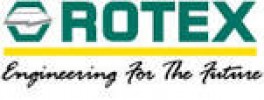
Asked in Rotex

Q. Explain about your work ?, Which cad softwares do you deal with?
I work as a Design Engineer using CAD software like SolidWorks and AutoCAD.
I am responsible for creating and designing products or components using CAD software.
I collaborate with other engineers and stakeholders to ensure designs meet requirements.
I have experience with SolidWorks, AutoCAD, and possibly other CAD software depending on the project.
I am proficient in creating 2D drawings and 3D models for manufacturing and prototyping.
I also have knowledge of GD&T and engineer...read more
Asked in KK LIGHTING INDIA

Q. How much tonnage molding machine are required fill 200gm peace? Which method are used?
The tonnage of molding machine required to fill a 200gm piece depends on the material being used and the design of the piece.
Calculate the volume of the 200gm piece to determine the amount of material needed.
Consider the material properties and flow characteristics to determine the appropriate tonnage of the molding machine.
Methods such as injection molding or compression molding can be used depending on the design and material of the piece.
Asked in Go Robo Mechatronics

Q. what is rib thickness consideration in plastic component? why are use rib in plastic component?
Rib thickness in plastic components is important for strength and stiffness. Ribs are used to improve structural integrity and reduce warping.
Rib thickness affects the strength and stiffness of the plastic component
Ribs are used to improve structural integrity and reduce warping in plastic components
Proper rib thickness can prevent sink marks and improve mold filling during injection molding
Rib thickness should be optimized based on the specific design requirements and materi...read more

Asked in Finulent Solutions

Q. What commands did you use in AutoCAD to recreate the drawing provided on the sheet, including offset, copy, move, match properties, and hatching?
I used commands like offset, copy, move, match properties, and hatching in AutoCAD to recreate the drawing.
I used the offset command to create parallel lines at a specified distance from the original lines.
I used the copy command to duplicate objects in the drawing.
I used the move command to relocate objects to a different location.
I used the match properties command to apply the properties of one object to another.
I used the hatching command to fill in enclosed areas with a ...read more

Asked in Thermax Limited

Q. How do you configure a flow transmitter to transmit a signal to a controller within a selected range?
Flow transmitter senses flow and transmits signal to controller in selected range.
Use a flow transmitter that is capable of sensing flow and transmitting a signal.
Connect the flow transmitter to the controller using appropriate wiring and communication protocols.
Configure the flow transmitter to operate within the desired range.
Ensure proper calibration of the flow transmitter to accurately measure and transmit flow data.
Implement suitable signal conditioning techniques to en...read more

Asked in Quest Global

Q. Tell me about the tools you have used for design.
Design tools include CAD software, 3D printers, prototyping equipment, and simulation software.
CAD software such as SolidWorks, AutoCAD, and CATIA are used for creating 2D and 3D designs
3D printers are used for rapid prototyping and creating physical models
Prototyping equipment such as CNC machines and laser cutters are used for creating functional prototypes
Simulation software such as ANSYS and COMSOL are used for testing and analyzing designs
Other tools include hand sketchi...read more
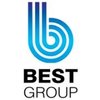
Asked in Best Group

Q. What are the required plastic tolerances for different parts?
Plastic tolerance requirements vary depending on the specific part and its function.
Plastic tolerance is typically specified in the design phase based on factors like material properties, part function, and assembly requirements.
Tighter tolerances are often needed for parts that require precise fits or interfaces.
Looser tolerances may be acceptable for parts that do not have critical dimensions or functional requirements.
Examples include injection molded parts for consumer el...read more

Asked in Larsen & Toubro Limited

Q. What are the key considerations when deciding on sheet metal thickness?
Sheet metal thickness is decided based on factors like material type, part geometry, function, and cost.
Consider material type and its properties (e.g. strength, ductility)
Analyze part geometry and required structural integrity
Evaluate function of the part and potential stresses it will endure
Factor in cost implications of different thickness options
Consult industry standards and guidelines for recommended thickness ranges
Interview Questions of Similar Designations
Interview Experiences of Popular Companies





Top Interview Questions for Design Engineer Related Skills



Reviews
Interviews
Salaries
Users

















